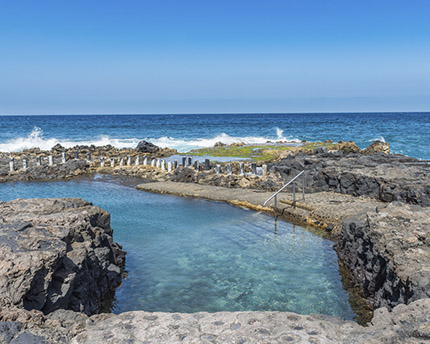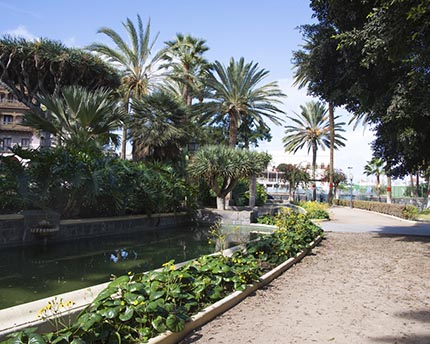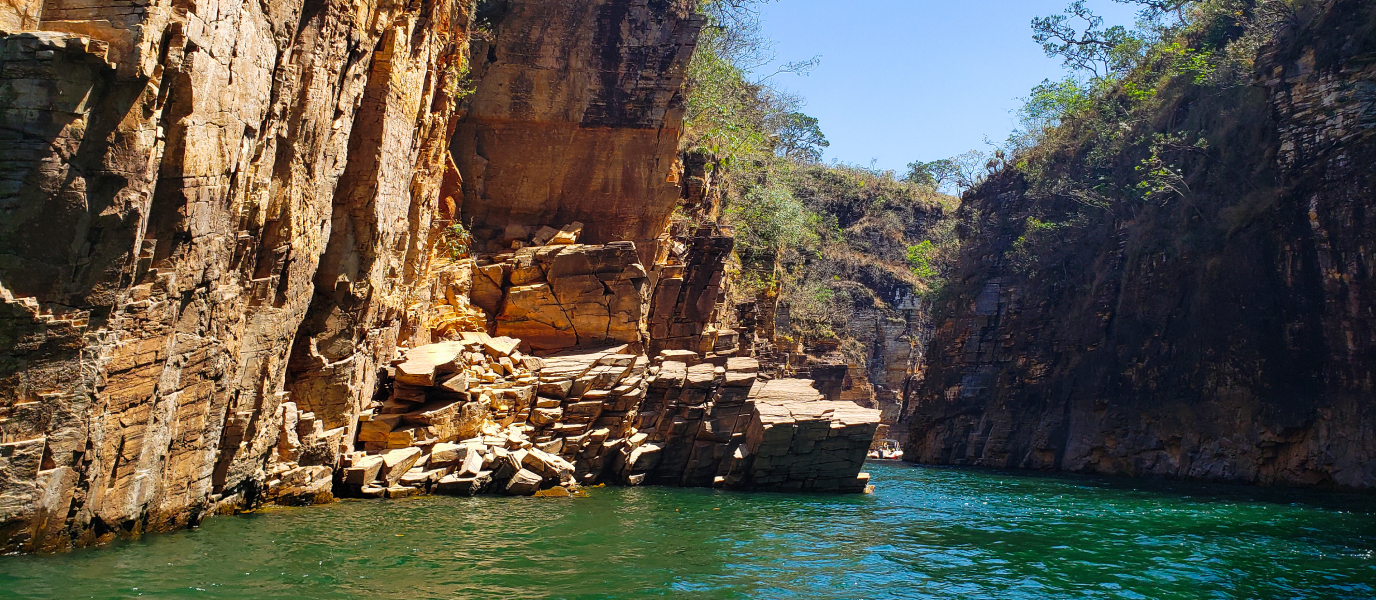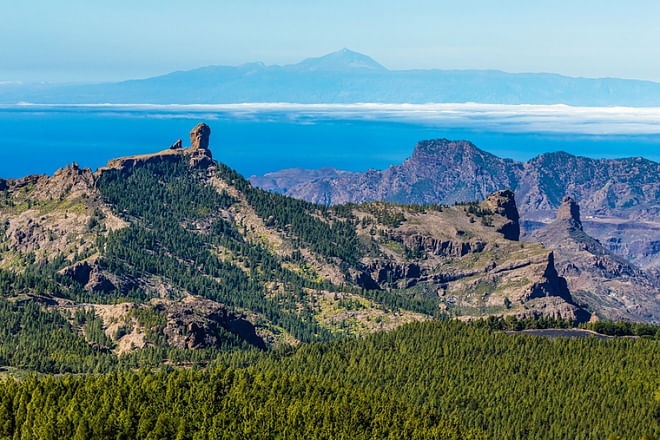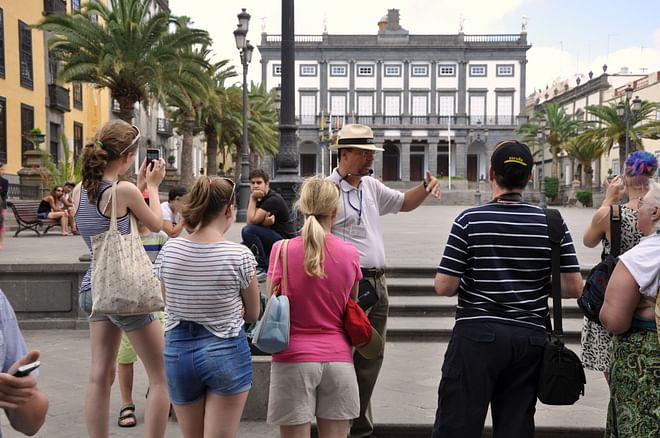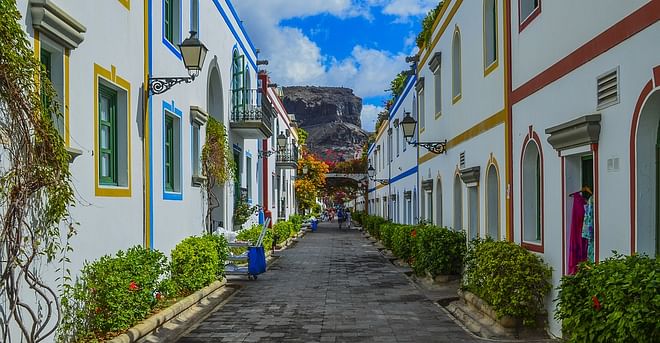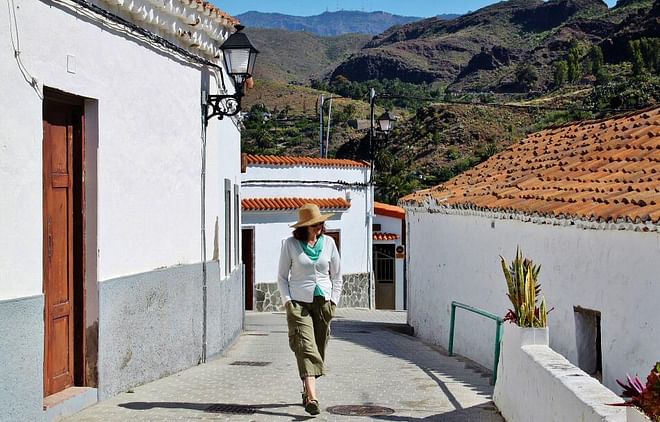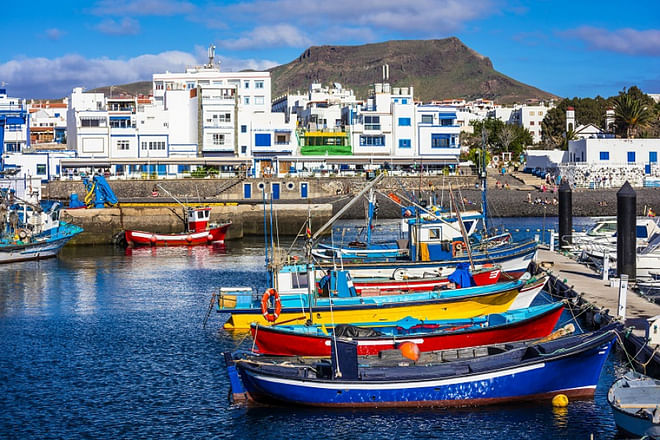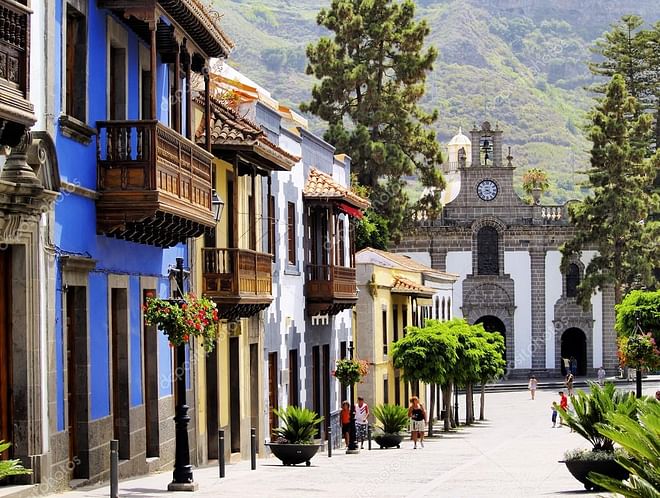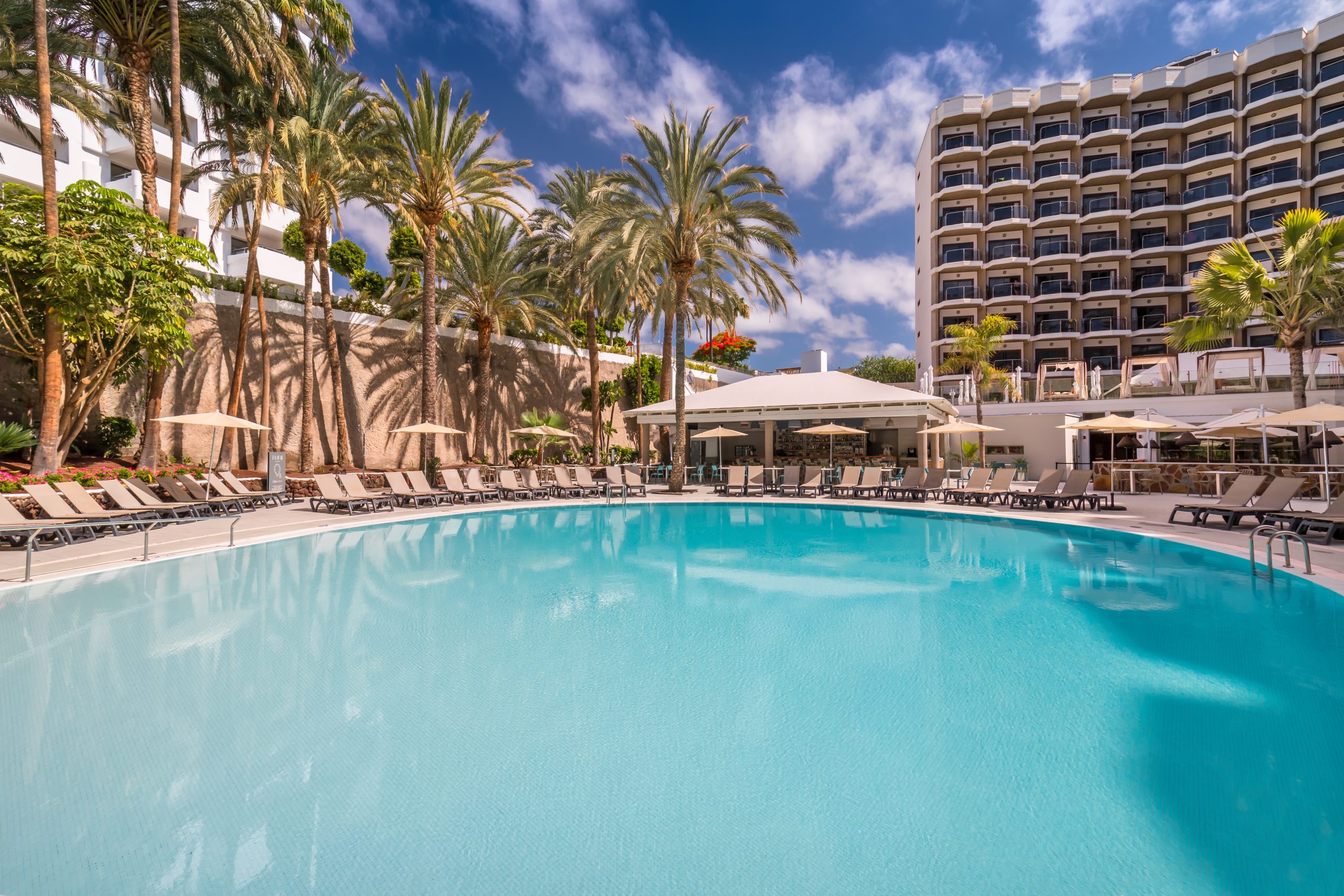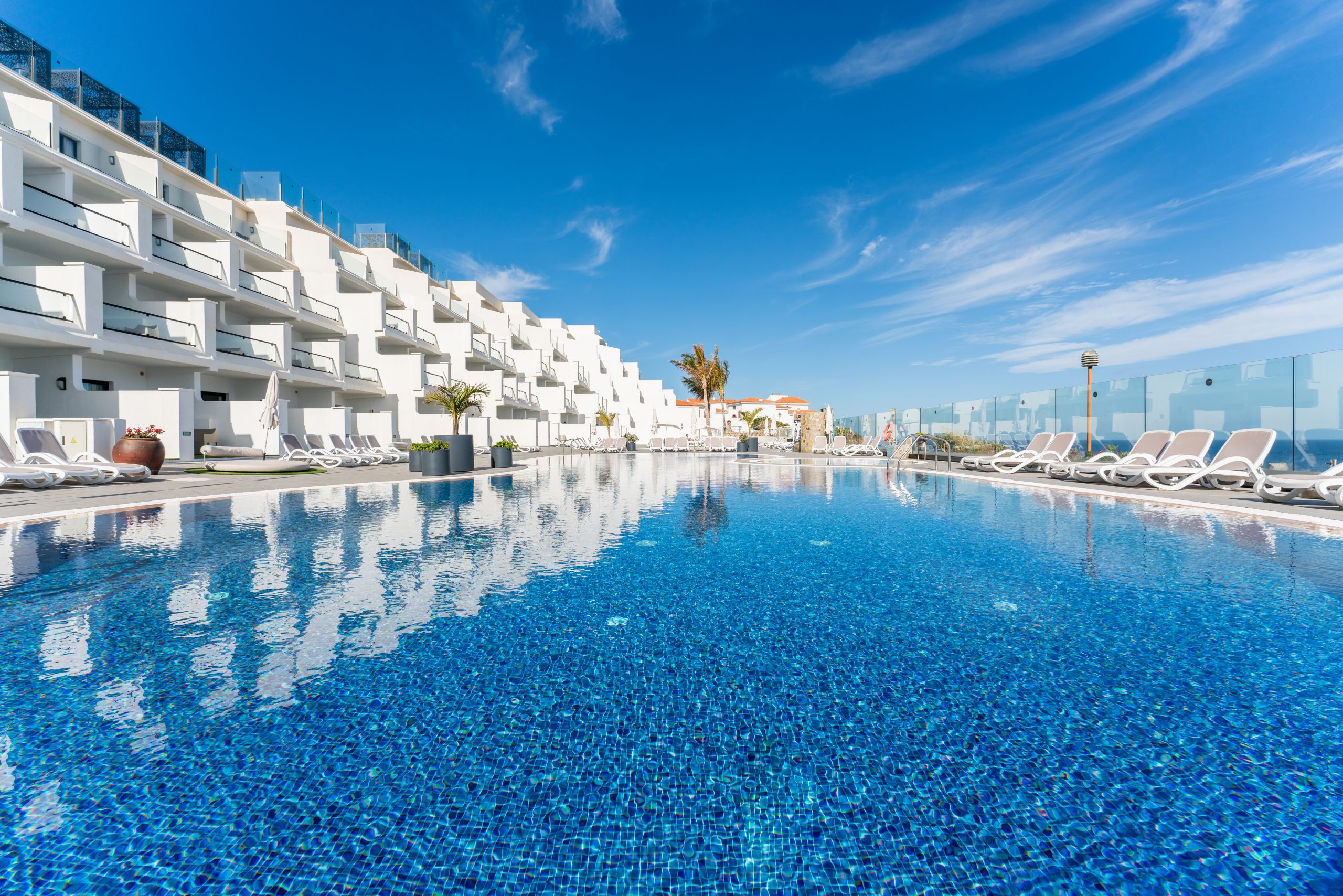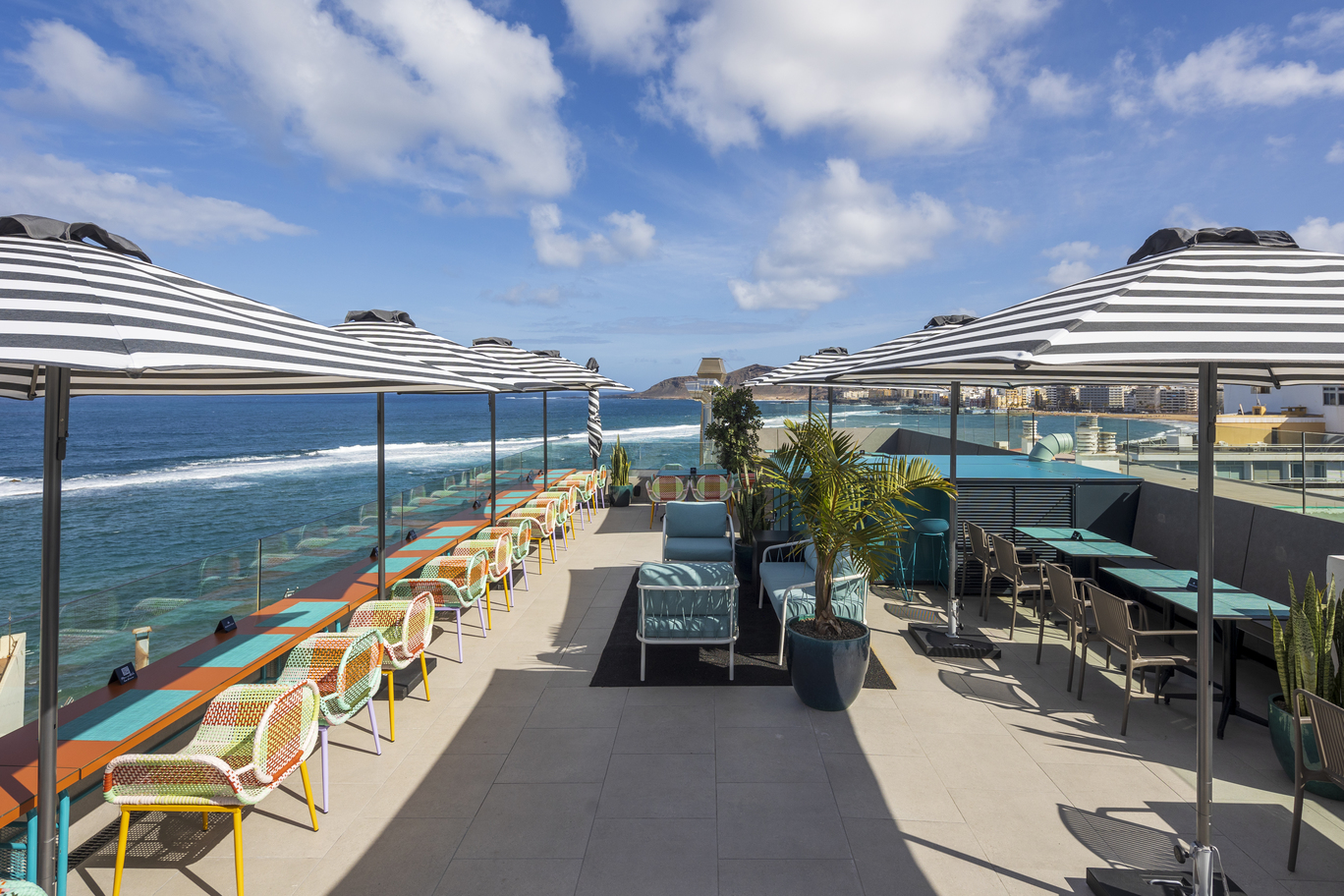The Maspalomas Dunes Special Natural Reserve is an immense expanse of sand which is continuously sculpted by the wind. The dunes are part of the San Bartolomé de Tirajana municipality in the south of the island of Gran Canaria and have had protected status since 1994.
The dunes emerged hundreds of years ago and in essence are fossilised remains spread far and wide by the wind. They provide a unique habitat on the island for African fauna including the giant lizard and several bird species. Some say it’s a desert, though not like any other given the proximity to the sea and a nearby shopping centre.
The dunes stretch from Playa de Maspalomas and its lighthouse to Playa del Inglés. The average annual temperature is a pleasant 23 degrees and there is little rainfall. In fact, there are only around 10 to 15 days of rain every year, usually in February and November. It’s therefore no surprise that Maspalomas is a popular destination for tourists on the hunt for guaranteed sun. The area has at least 259 sunny days per year.
Maspalomas Dunes, a magical place with an agreeable climate
The Maspalomas Dunes Natural Reserve comprises three distinct ecosystems: the oasis or palm grove, the pool, and the dunes themselves, barely a few metres from the sea. It’s an immensely beautiful and unique landscape that could be from another planet. Around the pool you’ll spot migrant birds taking a rest on their way to Africa.
From here, the dune fields open up, their shape constantly changing at the whim of the wind that whips in from the sea. You’ll never tire of looking at them – the scene is different every day.
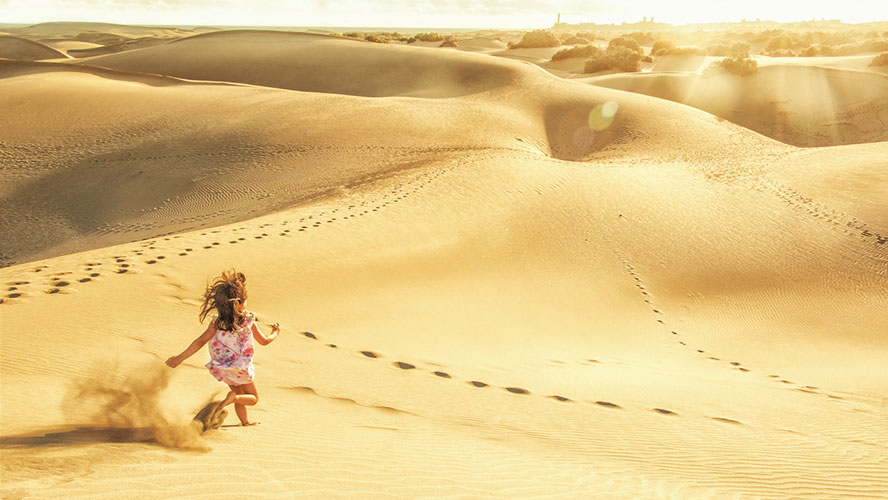
The origin of the Maspalomas Dunes
This dune system on Gran Canaria was formed by the settling of materials from the neighbouring Fataga, Ayagaures and Chamoriscán ravines, along with shell remnants washed up by the sea over the centuries. The resulting mounds of sand were later colonised by plants which in turn created the dunes. They are a living system that reaches maturity at 15 to 20 metres tall and at around 200 metres wide. Later, the trade winds (often blowing onto Playa del Inglés) push the sand inland. Scientists have discovered that the total surface of the dune field experiences periods of growth and shrinkage. At the moment, the dunes seem to be getting bigger.
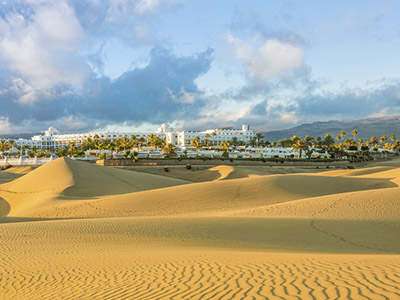
The Maspalomas Dunes are next to a 6-km beach which contains a vast amount of biodiversity and is hugely valuable both scientifically and on account of the landscape.
Make sure to visit this unique place during your island getaway on Gran Canaria. Why not take a fun and exciting walk through the dunes to the beach. It’ll be a great day out whether with family or with friends. You can almost guarantee that the kids will slide down the dunes and cover themselves in sand. Why not join them – you’ll have a blast!
Viewpoint
If you’re looking for that perfect holiday snap, head to the viewpoint for a very special view. It’s a popular spot at sunset, and you’ll soon see why once the golden colour of the dunes fades away the desert-like expanse fills with shadow.
Camel rides at Maspalomas
Another popular tourist activity are the half-hour camel rides through the dunes. The exact route is restricted by the Government of the Canary Islands to protect the area. Camels may have a reputation for being bad-tempered and stubborn, but they are in fact very smart and calm creatures, and you’ll feel like Lawrence of Arabia as your ride through the impressive dune landscape. These animals were introduced to the Canary Islands in the late-15th century on account of their resistance to the climate conditions on the islands and their physical strength.





































































